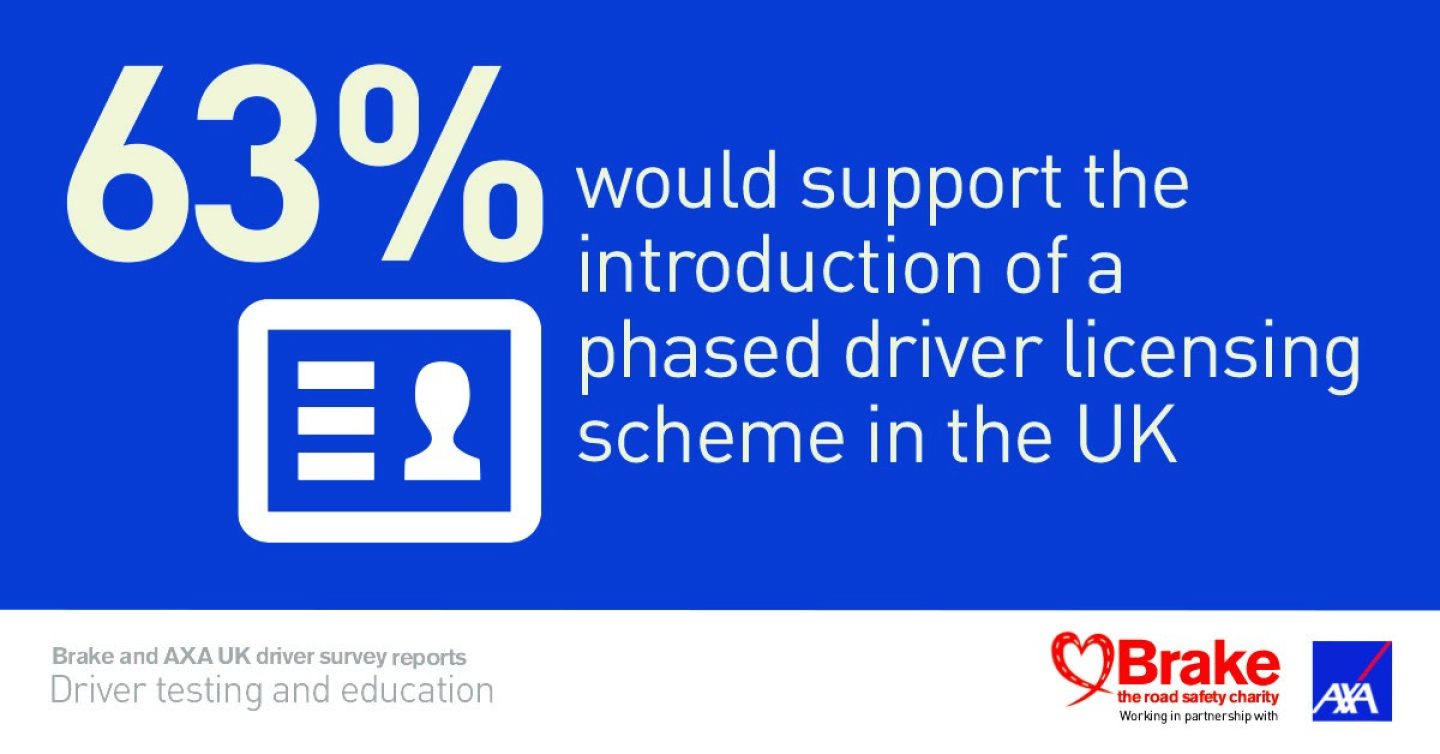Sharron’s daughter Caitlin was killed in a crash involving a newly qualified driver. She is working with Brake to campaign for a safer driver licensing system.
Why is Brake campaigning for progressive licensing for young and newly qualified drivers?
In 2023, 4,959 people were killed or seriously injured from a crash involving a young driver [1]. A progressive licensing system, with minimum periods for learning, enhanced testing and training, and measures to reduce the risks associated with carrying peer-age passengers and driving at night, could prevent thousands of casualties and save millions of pounds every year if introduced in Britain [2].
- Young drivers aged 17–24 are at greater risk than other drivers because of age and inexperience.
- 1 in 5 drivers crash within a year of passing their test.
- Typical brain development means young drivers are often more likely to take risks and are less able to regulate their impulses or understand the consequences of their decisions.
- It has been estimated that a progressive licensing system in Britain could save 4,471 casualties and £224 million annually (based on 17-19 year old drivers only) [2].
- A progressive licensing system – which introduces elements such as a minimum learning period and a restriction on driving at night – has proved successful in reducing road deaths and injuries of young drivers in other countries [3-6].
- There is good evidence that additional hazard perception training is another effective way to improve driver safety [7,8].
On 29 July 2022, Nicola’s son Aaron, 18, died in a crash on a road near Bedale in North Yorkshire. Watch a short film by Brake where Nicola talks about the impact of Aaron's death and how support from Brake has helped her.
In May 2023, Brake surveyed 2,010 drivers to determine their views on driver testing and education.
Click here to read the Driver testing and education survey report


